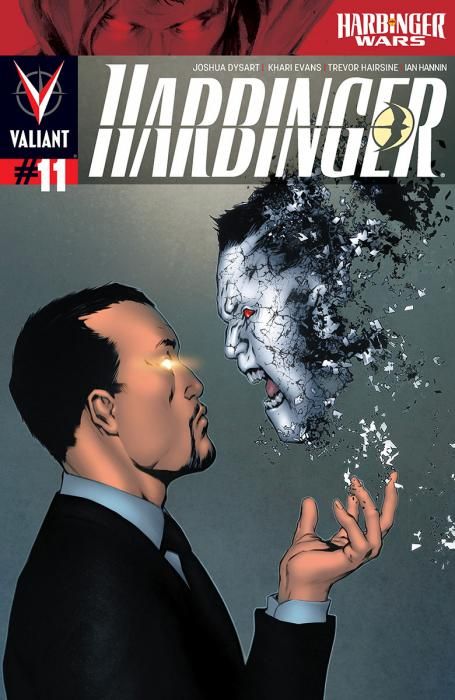In "Harbinger" #11, Joshua Dysart, Khari Evans and Trevor Hairsine get the team back on track with the force of a single character's resolve, and happily, the plot and the core of the plot also feel re-righted afterwards.
"Harbinger" began strong through Dysart's characterization-driven opening storyline, but recent issues have suffered a little in pacing. While it's too early to comment on its overall success, the "Harbinger Wars" crossover has re-aligned the priorities of the Valiant titles. As crossovers often do, it has drained some narrative tension from the pre-existing storyline and inserted a lot of information dumps. While the Valiant Universe is small compared to the shared universe of Marvel and DC, it still threatens to be messy when all the characters from all current titles must have a turn in the spotlight.
"Harbinger" #11 opens with a scene from Toyo Harada's past. Overall, sequences with Harada lack the emotional punch of scenes that feature the Renegades. Despite the glimpse of his tragic past in "Harbinger" #0, Harada still isn't yet a villain who can hold up his end of the stage by himself, mostly because his methods are so oppressive that he fails to inspire empathy. He has continually played the tyrannical father-knows-best to Peter's rebellious adolescent. Despite the fact that his young opponents are morally gray (with the possible exception of Faith Hebert), Harada's combination of power, imperiousness and self-righteousness has made him the obvious bad guy to the Renegades with their brash youth and underdog status.
In "Harbinger" #11, Dysart shows Harada as an idealistic young businessman with uncompromised principles, on the brink of a lucrative but potentially corrupting deal with Rising Spirit Securities, and the closing scene hints at further business intrigue to be revealed. Harada seems caught between resistance and temptation in response to corporate overtures. This feels Faustian, and correspondingly his character feels more human.
The issue also further develops the newer team members, Flamingo and Torque. Dysart's scene in the bar is a deliberate setup to force Torque to face his own self-loathing, but the writer's excellent dialogue makes the artificiality easier to ignore. Despite causing trouble, Flamingo and Torque are sympathetic in their motives of a little fun and stress relief, and yet Peter and Kris are likewise sympathetic in their more parental attitudes of caution and protectiveness.
Finally, Faith Hebert comes into her own even more in "Harbinger" #11, proving herself to be as important a leader as Peter or Kris in her unshakable good heart and determination to do right by her powers. Faith's sentiments could easily slip into being cheesy, preachy or bossy, but Dysart keeps the balance just right, keeping her buoyant, steady and inspirational. In particular, Dysart writes a great one-page scene of Faith in flight, and the emotional beat of this short interlude, coupled with Khari Evans' excellent body language and facial expressions for this page, is one of the best moments of the last few issues.
In "Harbinger" #11, the title gets back on track with its strengths. I hope that "The Harbinger Wars" crossover will allow readers to see the characters interact with the larger Valiant Universe, without sidelining the gravity-like idealism and character interactions that tie the Renegades together as a team.

